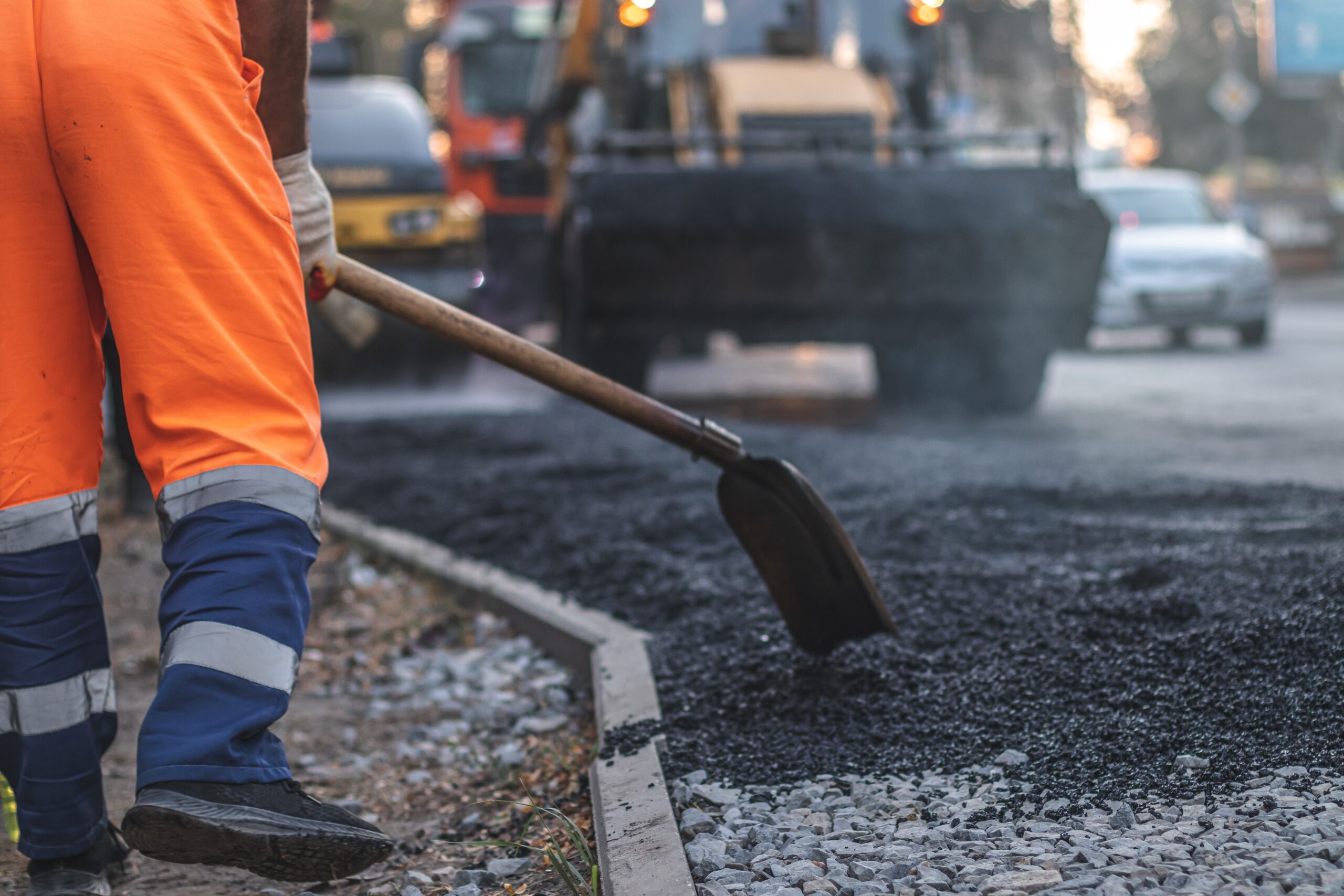
A well-maintained parking lot speaks volumes about your property’s management. Whether it’s a retail center, office building, or apartment complex, your parking lot is one of the first things people see. That makes regular inspections critical to preserving safety, functionality, and appearance.
If neglected, poor parking lots impact your business and image significantly. Understanding the inspection process helps property owners and managers prepare, plan repairs, and stay ahead of potential liabilities. In this blog, we’ll explore what typically happens during a parking lot inspection, the key issues professionals look for, and how to use the findings to protect your investment.
Key Reasons to Schedule Lot Inspections
Parking lots endure constant pressure from traffic, weather, and the passage of time. Regular inspections help detect early signs of deterioration before they develop into expensive problems.
Benefits of Routine Inspections
You should expect several long-term advantages from a thorough inspection:
- Prevention of costly repairs: Early detection of small cracks or drainage issues avoids major overhauls later.
- Extended pavement life: Regular assessments help schedule maintenance that preserves your surface.
- Increased safety: Identifying trip hazards and faded markings prevents accidents. It is critical to understand how milling improves parking lot safety and compliance.
- Improved appearance: A clean, orderly lot reflects well on your property.
- Compliance with codes: Inspections can verify ADA markings and fire lane access.
When you know what to expect, you can take proactive steps and budget more effectively.
Starting the Inspection: What to Note
Every inspection starts with a comprehensive visual walkthrough. This initial review lays the groundwork for a more thorough analysis.
What Inspectors Look For First
During the walkthrough, inspectors will:
- Note the general surface condition, including cracks, potholes, oil stains, and faded paint.
- Identify drainage patterns to locate standing water or flow issues.
- Check for debris or blockage that may hide damage or cause hazards.
- Evaluate traffic flow and signage to ensure a logical and legal layout.
They will also take photographs and notes to document the condition of each area. These records are essential for tracking changes over time and justifying future repairs.
Creating a Baseline for Maintenance
This walkthrough helps establish a baseline condition for your lot. From here, inspectors can compare previous reports to spot new concerns or recurring issues.
Expect this part of the process to be highly visual and hands-on, often done with property managers present.
Evaluating Pavement Surface and Structural Integrity
After the initial walkaround, inspectors dive deeper into the physical state of the pavement.
Identifying Common Surface Problems
A detailed inspection will uncover issues like:
- Cracking patterns: Longitudinal, transverse, block, or alligator cracking indicate stress levels. Understanding these patterns is key to deciding whether crack sealing vs patching which repair is better.
- Potholes and depressions are signs of water infiltration and a weakened subgrade.
- Raveling or surface wear: Shows the breakdown of asphalt due to oxidation and traffic.
- Sealcoat condition: Faded or worn sealcoat can expose asphalt to damage.
Each finding helps determine whether routine maintenance or major repair is needed.
Testing for Load-Bearing Strength
In some cases, inspectors may use core sampling or non-destructive testing to evaluate the structural strength of the pavement. This helps understand if your base layers are intact or need reinforcement.
These assessments are critical if your lot supports heavy vehicle traffic or has recurring problem spots.
Reviewing Water Flow and Runoff Management
Poor drainage is a leading cause of pavement failure. Inspectors will closely examine how water behaves across your lot.
Key Areas of Drainage Review
Expect inspectors to review the following:
- Surface grading: Ensures water flows away from buildings and does not pool.
- Gutters and inlets: Checked for clogging, breakage, or insufficient capacity.
- Low spots and birdbaths: Indicate improper compaction or settling.
- Edge conditions: Water collecting along curbs may signal improper slope. Water that stays on the surface for Parking Lot Slope and Bird Baths
Water that stays on the surface for more than 48 hours is a red flag. Even minor drainage issues can accelerate cracking and subgrade erosion.
Solutions Based on Drainage Findings
If inspectors identify trouble spots, they may recommend:
- Re-grading parts of the lot
- Installing new inlets or trench drains
- Cleaning or upgrading existing drainage infrastructure
- Adding overlays with improved slope
Addressing drainage problems early can dramatically improve your lot’s performance and longevity.
Striping, Signage, and Compliance Review
Parking lot inspections are not just about asphalt. Visibility, layout, and legal compliance are equally important.
What the Inspection Covers
Inspectors will review:
- Line striping condition: Faded or missing lines reduce safety and create confusion.
- ADA markings and signage: Must meet federal requirements for accessible spaces.
- Directional arrows and signage: Must guide traffic logically and clearly.
- Fire lane markings: Often required by code and must be visible.
High-traffic areas or properties open to the public are especially vulnerable to liability if striping or signage is unclear.
When to Update Markings
A good rule of thumb is to re-stripe your lot every 1–2 years or sooner if the lines are hard to see. Inspections help identify when repainting or thermoplastic striping is needed.
Proper markings protect pedestrians, reduce liability, and create a smoother flow for drivers.
Implementing Recommendations From Inspection Reports
Once the inspection is complete, the focus shifts to planning repairs and preventive maintenance.
Interpreting the Inspection Report
Expect a detailed report including:
- Photos and notes from each area
- Ratings for pavement condition
- Maintenance and repair recommendations
- Cost estimates for major work
This document becomes a roadmap for future planning. It helps you prioritize urgent issues and schedule routine tasks, such as crack sealing or sealcoating.
Budgeting and Partnering for Maintenance
A thorough inspection provides the clarity needed to budget effectively. Based on the report, you may:
- Schedule preventive maintenance for the coming season
- Phase out large repairs over time
- Allocate funds for major reconstruction if necessary
Partnering with a qualified paving contractor ensures the inspection findings are translated into action. Their team can help you interpret results, recommend timelines, and carry out the needed work.
Frequently Asked Questions
What areas are inspected during a parking lot inspection?
Inspectors check the pavement condition for cracks and potholes, visibility and condition of markings and signage, lighting functionality, drainage, and safety features such as fire lanes and pedestrian crosswalks.
How is accessibility evaluated in a parking lot inspection?
The inspection verifies the number and condition of handicap parking spaces, accessibility of routes to entrances, and compliance with ADA standards for ramps, signage, and surface conditions.
What safety and security elements are reviewed during the inspection?
The review includes checking CCTV camera operation, emergency call stations, security patrols, fire lanes, speed bumps, and ensuring that all safety signage is clear and unobstructed.
How is the overall cleanliness and landscaping assessed?
Inspectors look for litter, debris, overflowing trash bins, and inadequate vegetation maintenance to ensure clear sightlines and safe pathways without obstructions.
What documentation and follow-up steps are involved in the inspection process?
Inspectors document findings with photos and notes, compile detailed reports with recommendations, ensure permits and compliance are up to date, and schedule repairs or follow-up inspections as needed.
Stay Ahead With Regular Inspections
A parking lot inspection is more than a glance at your pavement. It is a strategic tool for preventing costly damage, maintaining safety, and projecting a professional image.
Understanding what to expect during the inspection process allows you to catch early signs of asphalt wear, surface fatigue, or drainage concerns, before they become costly repairs..
If it’s been more than a year since your last inspection, now is the time to act. Schedule a professional review with Asphalt Coatings Company and stay ahead and safe.



